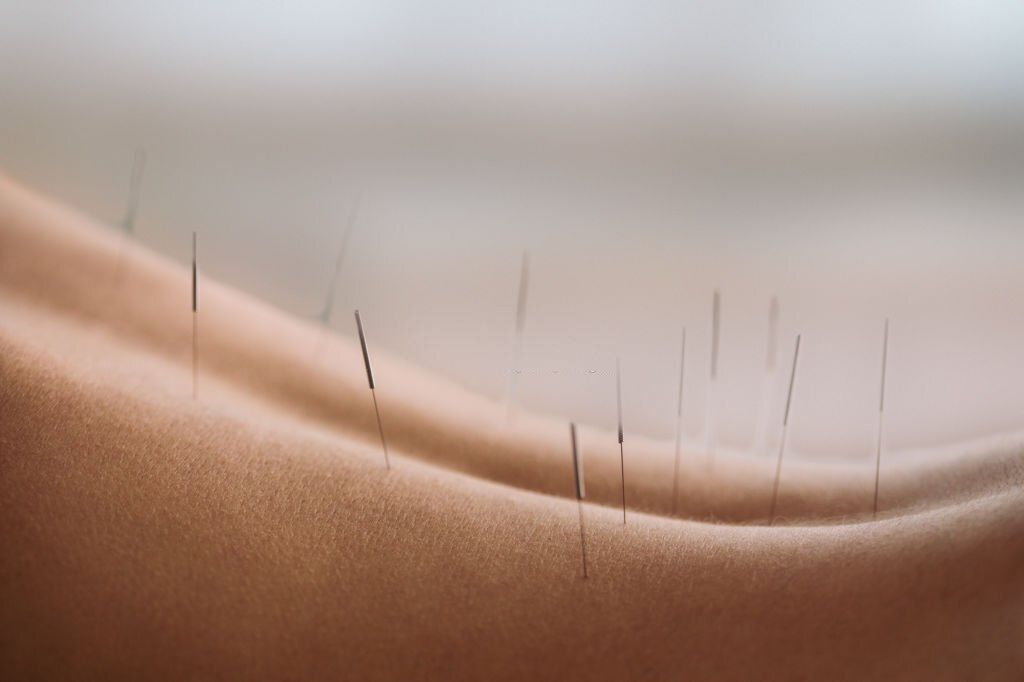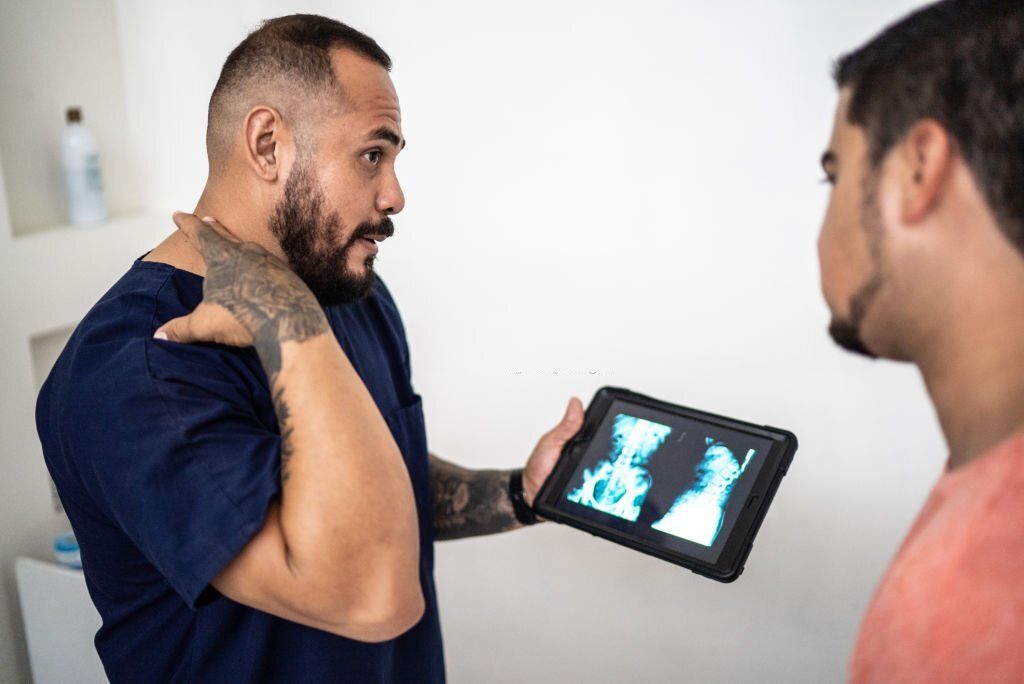This article is reviewed, corrected, and approved by: Julia Weiss CNP| RN | MPH
Many people are wondering how acupuncture and chiropractic can work the same way. The truth is they work the same way but for different reasons. Both of these treatments are non-invasive and aim to promote overall wellness and pain relief.
In order to reduce discomfort and increase mobility, chiropractors manipulate the spine and other joints. The practice of acupuncture involves placing needles into certain bodily locations in an effort to promote health, balance, and energy flow. People seek acupuncture and chiropractic treatments to address various health conditions, including back pain, headaches, digestive issues, and stress.
These treatments have also been used to support overall wellness and promote relaxation. While some people may prefer traditional medical treatments, others may find acupuncture and chiropractic treatments effective alternatives or complementary therapies.
Here's the basic answer you're looking for, but there's additional information you need to know before making any decisions. Let's find out the types, benefits, side effects, similarities, and differences between acupuncture and chiropractic.
What is Acupuncture?

Acupuncture has been used for thousands of years to treat a variety of diseases and disorders. Stimulates certain points on the body, known as acupoints. Acupuncture involves inserting thin needles into specific acupoints. Different points will be targeted depending on the type of condition being treated.
The needles may be inserted from half an inch to a few inches into the skin, depending on the depth of the acupoint. Stimulating these points is believed to restore balance and harmony in the body, aiding healing.
Acupuncture may also be combined with other therapies, such as moxibustion (the burning of herbs) and cupping (creating suction on the skin using cups). Additionally, herbal remedies and lifestyle changes can be recommended alongside acupuncture treatment.
How Does Acupuncture Work?
In acupuncture, thin, sterile needles are inserted into specific acupoints on the body. A patient typically feels a sensation of warmth, tingling, or heaviness after the needles have been inserted for some time, typically 20-30 minutes. To enhance the effects of acupuncture, heat, pressure, or electrical stimulation may also be used.
Benefits of Acupuncture Treatment
Here are the benefits of acupuncture treatment
• Pain relief –By stimulating particular body spots and releasing endorphins, acupuncture is said to reduce chronic pain. Endorphins are hormones that work to reduce the perception of pain.
• Improved circulation – It can improve circulation by stimulating blood flow and oxygenation to muscles, organs, and other body areas. As a result, inflammation is reduced, and healing is promoted.
• Stress relief – Modern acupuncture can help reduce stress and anxiety levels by releasing endorphins and regulating the autonomic nervous system.
• Reduced fatigue – Different acupuncture procedures can increase energy levels by improving circulation, reducing fatigue, and relieving stress.
• Improved digestion – Acupuncture can help improve digestion by stimulating nerves in the digestive tract and improving the functioning of the digestive system.
• Boosts immunity – Acupuncture can help boost immunity by stimulating lymphatic drainage and increasing white blood cell count.
• Better sleep – Acupuncture on the feet can help regulate the body's circadian rhythm, which helps improve sleep quality.
It is believed that acupuncture is a safe and effective method of treating various conditions and improving overall health and well-being. Therefore people can get benefited from modern acupuncture.
Different Types Of Acupuncture Treatments
The different types of acupuncture costs will vary. Basically, acupuncture cost will depend on which type of treatment you choose. There are various types of acupuncture treatments available, and the most common ones are:
- Traditional acupuncture: In this type of treatment, needles insert into certain places on the body to promote healing and balance. Before beginning treatment, the acupuncturist evaluates the patient's health and develops a personalized care strategy that ensures the most efficient treatment for the best health outcomes.
- Electro-acupuncture: This modern acupuncture involves using a small electrical current applied to the acupuncture needles, such as acupuncture shoulder pain relief and back pain relief. This is believed to enhance the effects of traditional acupuncture and can be especially beneficial in the treatment of chronic pain.
- Auricular acupuncture: This involves the insertion of small needles into specific points on the ear. In addition to treating addiction, anxiety, and other emotional disorders, this acupuncture is often used for pain relief.
- Scalp acupuncture: This involves the insertion of needles into specific points on the scalp. Neurological conditions are often treated with this type of acupuncture, such as stroke or multiple sclerosis.
- Cupping therapy: In this method, cups are applied to the skin to generate a hoover effect, which helps to promote circulation and relieve discomfort. Acupuncture is frequently used with cupping treatment.
- Moxibustion: This involves an acupuncture point stimulated by burning a herb called moxa near the skin.
Dry Needling vs Acupuncture
Thin, sterilized needles are inserted into the skin during acupuncture and dry needling procedures in order to stimulate particular body spots. These two techniques share some similarities but also differ significantly.
Dry needling is a modern Western technique using needles to release muscle knots and reduce pain. This method is frequently used by physical therapists, chiropractors, and other medical practitioners to treat back pain, neck discomfort, and sports injuries. The science behind dry needling is typically Western.
Acupuncture, on the other hand, aims to balance the body's energy flow with needles inserted into specific points. It is used to treat a variety of ailments, including pain, digestive issues, infertility, and stress, and is based on the premise that the human body is an intricate web filled with energy channels and organ systems.
What is Chiropractic?

Quiropraxia is the Spanish term for "chiropractor. Chiropractic treats musculoskeletal disorders, particularly those affecting the spine, as an alternative medicine. Chiropractors use spinal manipulation and adjustments to relieve pain and restore function.
A Canadian named Daniel David Palmer developed a theory on how misalignments in the spine could cause various health problems in the late 19th century. Palmer claimed that his first chiropractic adjustment improved the hearing of a patient suffering from hearing loss in 1895. In 1897, Palmer founded the first chiropractic school in Davenport, Iowa.
How Does Chiropractic Work?
According to chiropractic treatment, many health problems are associated with misaligned joints in the body. Chiropractors use manual manipulation techniques to correct these misalignments and restore proper body function.
Chiropractic adjustments move joints beyond their normal range of motion with controlled force.
Inflammation can be reduced, joint mobility improved, and healing promoted. Chiropractors may also use additional methods, including massage, stretching, and exercise, in their adjustments.
Numerous illnesses can benefit from chiropractic care, including:
- Pain in the back
- Symptoms of neck pain
- Migraine and headaches
- Stiffness and pain in the joints
- The sciatic nerve
- Syndrome of the carpal tunnel
- Fibromyalgia
- Whiplash
- Sports injuries
Chiropractic treatment is also considered safe when performed by a licensed and trained chiropractor. Chiropractic care is typically well tolerated and has a minimal risk of significant adverse effects, according to studies.
Benefits Of Chiropractic Treatment

Here are some benefits of chiropractic treatment are
- Pain relief: Chiropractic adjustments can assist with conditions including back pain, neck discomfort, and headaches by reducing inflammation and pain in the body.
- Better posture: Chiropractic massage adjustments can help to correct postural imbalances and improve overall posture.
- Improved athletic performance: Chiropractic treatment can help athletes to recover from injuries, reduce the risk of future injuries, and improve performance.
- Improved joint mobility: Chiropractic treatments restore joint alignment and function to improve flexibility and range of motion. Such as chiropractic for shoulder pain also relieves back pain which boosts overall joint mobility, including the spine.
- Improved overall health: Chiropractic care encourages the appropriate operation of the neurological system, immune system, and other bodily systems, which can assist in promoting overall health and wellness.
Different Types Of Chiropractic Treatments
Different types of chiropractic treatments include the following:
- Diversified Technique: The most popular chiropractic method is this one. It involves manual manipulation of the spine to correct misalignments and improve joint mobility. The damaged spine is subjected to a regulated force by the chiropractor using their hands.
- Nucca chiropractic: In NUCCA chiropractic care, the atlas (C1) and axis (C2) vertebrae are aligned by focusing on the upper cervical spine alignment.
- Activator Technique: This more gentle quiropraxia technique uses a small handheld instrument to apply a precise force to the spine. Back pain, neck discomfort, and headaches are among the ailments that are frequently treated with it.
- Gonstead Technique: The technique involves using x-rays and other diagnostic tools to analyze the spine in detail. Chiropractic manipulation is used to correct misalignment and improve the functioning of the joints.
- Thompson Technique: This technique uses a specialized table with drop pieces to facilitate adjustments. The table has sections that can be raised and then dropped to apply a gentle force to the affected area.
- Cox Flexion-Distraction Technique: This technique uses a specialized table that allows chiropractors to stretch the spine gently. Sciatica and disc herniation are two disorders that are frequently treated with it.
- Active Release Technique (ART): This type is a soft tissue therapy that uses movement and pressure it treats muscle, tendons, ligaments, fascia, and nerve complaints using movement and pressure.
- Graston Technique: This chiropractic massage technique breaks down scar tissue and adhesions using stainless steel instruments. It is frequently used to treat ailments including carpal tunnel syndrome, plantar fasciitis, and tennis elbow.
Overall, the type of chiropractic treatment used will depend on the individual's condition, preferences, and the chiropractor's expertise. To receive safe and effective treatment, you should choose a qualified and experienced chiropractor.
What Is The Difference Between Acupuncture And Chiropractic?
A chiropractor and an acupuncture doctor both work with the body's nervous system, but there are some key differences. The first difference is that chiropractors focus on the musculoskeletal system, including the spine. Acupuncture, however, is used for the entire body, including the nervous system.
Acupuncture vs Chiropractor
How Acupuncture And Chiropractic Work The Same Way??
Acupuncture and chiropractic care are alternative therapies that aim to promote healing and improve overall health and well-being. While they are distinct practices, both practices can provide non-invasive, drug-free pain relief. Acupuncture and chiropractic care are both non-invasive, drug-free therapies that can help alleviate pain and improve overall health without using medications or surgery.
Acupuncture and chiropractic care share similarities in how they improve the body's natural healing response, restore balance, and provide non-invasive, drug-free pain relief. Both therapies promote healing and improve overall health without medications or surgery. Acupuncture and chiropractic therapy can both help people with Rheumatoid arthritis, joint pain, and back pain.
Chiropractor and Acupuncturist
The acupuncturist and the chiropractor are two different types of healthcare providers who both provide relief from pain, but they have different approaches. The acupuncturist deals with pain by stimulating energy points in the body, and the chiropractor focuses on the joints.
The acupuncturist is trained in the Chinese medical system, and the chiropractor is trained in the Western medical system. The acupuncturist employs acupuncture, and the chiropractor employs chiropractic. The acupuncturist is usually a practitioner of Eastern medicine, and the chiropractor is usually a practitioner of Western medicine.
The Potential Risks And Side Effects Of The Acupuncture And The Chiropractor
Both acupuncture and chiropractic care are generally considered safe when trained and licensed professionals administer them.
Some potential risks and side effects of acupuncture include:
- The needle sites may be sore or bruised.
- Fatigue or dizziness.
- Temporary worsening of symptoms before they improve.
- Infection or injury if needles are not properly sterilized or inserted incorrectly.
- Fainting or other complications in rare cases.
- To reduce the danger of difficulties, it's crucial to select a qualified and experienced acupuncturist who adheres to the right safety and hygiene procedures.
Some potential risks and side effects of chiropractic care include the following:
- Soreness or discomfort in the treated area
- Headaches or fatigue
- Nausea or dizziness
- Temporary worsening of symptoms before they improve
- Injury to the spine or other joints if manipulation is performed incorrectly or too aggressively
- Pain and mobility are improved through chiropractic manipulation of the spine and joints.
- Stroke or other complications in rare cases
It's critical to select a qualified and experienced chiropractor who performs a thorough evaluation and uses appropriate techniques to minimize the risk of complications. In both cases, it's important to discuss any concerns or questions with the practitioner before treatment and note any strange or harmful side effects or complications right away. It's also important to follow any aftercare instructions provided by the practitioner to support healing and minimize the risk of further complications.
How To Determine Which Treatment Is Best For You?

A healthcare expert, such as a doctor or a specialist in the area in question, should be consulted when deciding on the best course of action for a specific disease. Here are some broad principles to bear in mind while choosing a course of treatment:
Collect the following information: Research the condition and treatment options available. Make careful to depend on reliable information sources, such as articles from medical journals, material from official government health websites, or advice from your healthcare professional.
Discuss options with a healthcare professional: Schedule an appointment with an expert to discuss treatment options. Ask questions about the benefits, risks, and potential side effects of each treatment.
Consider personal preferences: Consider personal preferences and lifestyle factors when making treatment decisions. For example, some people may prefer a treatment that requires minimal disruption to their daily routine or that avoids medication.
Weigh the pros and cons: Together with medical specialists, create a treatment strategy that best suits your requirements and interests. Think about things like the condition's severity, how it could affect your quality of life, and whether there might be long-term advantages.
Collaborate with healthcare professionals: Work collaboratively with healthcare professionals to develop a treatment plan that best meets your needs and preferences.
Remember that the best treatment for a particular condition may vary depending on the individual patient's circumstances. It's important to be informed, ask questions, and work collaboratively with healthcare professionals to make an informed decision about the best treatment option.
What Conditions Are Best Suited For The Treatment?
Different medical treatments are used to treat different health conditions, and the most appropriate treatment will depend on the specific condition and the individual patient's needs. For example, some conditions may require medication, while others may require surgery or other types of therapy.
In general, a patient's situation, health, and any underlying conditions influence the best treatment for any given condition. Choosing the best course of therapy may also be influenced by the patient's preferences and goals.
A healthcare professional can determine what treatment is best for a particular condition, such as a doctor or a specialist in the relevant field. They can offer more detailed information on the therapies that are available and which ones are most appropriate for a certain patient's requirements.
Conclusion
Selecting the best course of action for a given ailment necessitates careful evaluation of a number of variables, including the condition's severity, individual preferences, possible advantages and hazards, and guidance from medical experts. Acupuncture and chiropractic care are two complementary and alternative medicine treatments that can offer relief from pain and other symptoms, but they also carry some potential risks and side effects.
It is essential to discuss with a licensed and experienced practitioner before undergoing treatment to ensure that it is appropriate, safe, and effective. Collaborating with healthcare professionals is crucial in order to provide patients with optimal care and achieve possible outcomes.
F.A.Q
Q: Is chiropractic pseudoscience?
Ans: It is a controversial topic whether chiropractic is pseudoscience. There is no scientific evidence that chiropractic pseudoscience whether it or not.
Q: How can i find female chiropractor near me?
Ans: Find a female chiropractor near you using these methods: Use a search engine, use a chiropractor directory, ask friends, family, or other healthcare professionals for recommendations for a female chiropractor, and Check chiropractor associations.
Q: How can I find prenatal chiropractor near me?
Ans: In the field of chiropractic, a prenatal chiropractor is a specialist in providing chiropractic care to pregnant women. You may utilize the chiropractor directory or the internet to find the closest chiropractic office.
Q: What are the differences between Chiropractic vs physical therapist?
Ans: Physical therapists and chiropractors both help people recover from injuries, manage pain, and improve mobility. Chiropractic, however, focuses mainly on manual adjustments to the spine and joints. Exercises, stretches, and other methods are employed by physical therapists to improve strength, flexibility, and range of motion.
Q: How much does acupuncture cost?
Ans: The cost of acupuncture varies depending on various aspects, such as the practitioner's experience and locality, the length of the sessions, and the number of treatments required. The typical cost of an acupuncture session is from $50 to $150, while certain doctors may charge more or less.
Q: How often should you get acupuncture?
Ans: Acupuncture treatments depend on the condition and severity of the symptoms. Serious diseases may require frequent treatments, whereas chronic conditions may take monthly or bi-weekly sessions.
Q: What toxins are released after chiropractic adjustment?
Ans: The release of toxins after a chiropractic adjustment is not supported by scientific evidence. Scientific research has debunked the myth that "toxins" are released from the body following a chiropractic adjustment.


